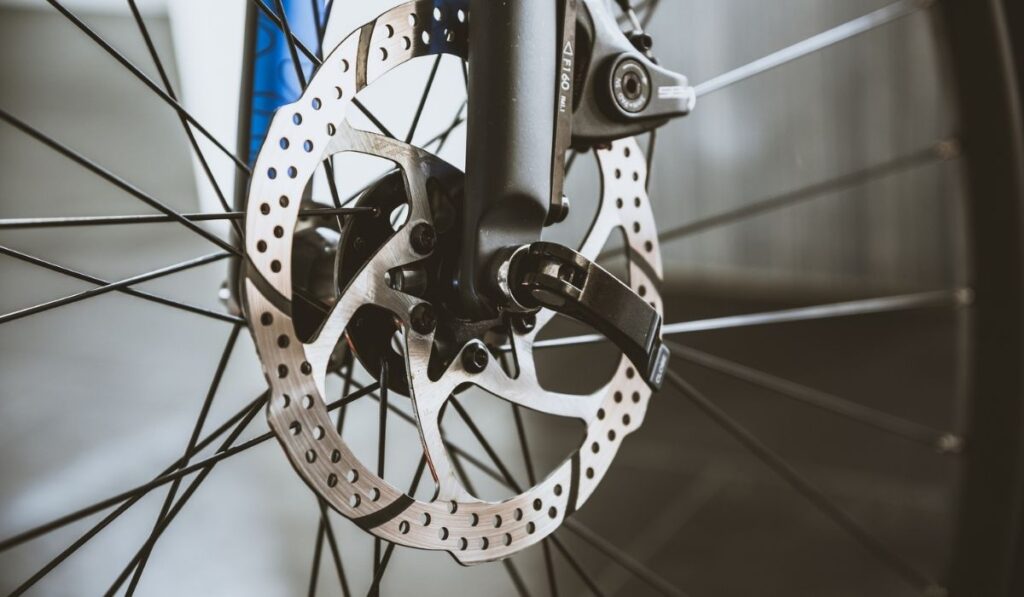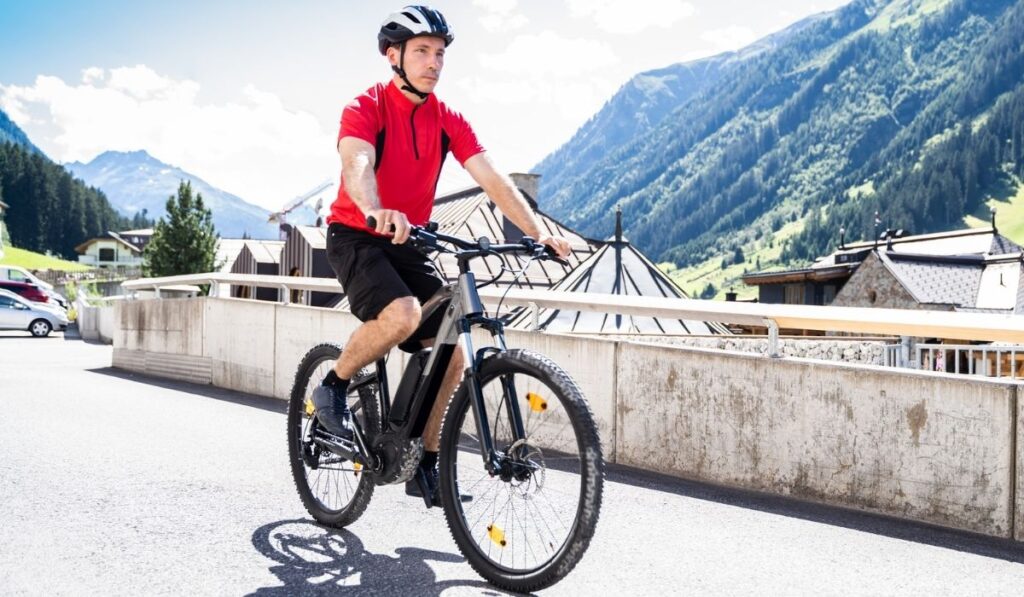Electric bikes are great for people who want to combine the best elements of two worlds: the thrill of biking with the benefits of an electric motor. E-bikes are nothing new, but they’ve never been more popular than they are right now. Before you buy your first e-bike, there are some key things that you should be looking out for to make sure you get the best bike for the best price. And the brake system is one of the most important factors to consider.
E-Bikes use two brake types: mechanical and hydraulic. Mechanical brakes are cheaper and great for commuting but require a bit more maintenance. More expensive hydraulic brakes are used for high-performance bikes that need more stopping power.
Both systems are effective and can efficiently stop you in an emergency, but they have certain distinctions. It’s essential to understand the differences between these two brake types since they will influence your safety and overall riding experience. In this post, we will answer some of the most common questions about e-bike brake systems. Read on to find out more!
How Do Electric Bike Brakes Typically Work?

E-bikes use a disc braking system, made up of three main parts:
- The lever: used to activate the brakes
- The brake cable: links the lever to the wheel calipers
- The wheel calipers: positioned in the center of the wheel and control the mechanism of wheel rotor and brake pads.
When you press the brake lever, it compresses the air or fluid in the cable lines and creates pressure to release the piston in the wheel hub. This piston pushes the braking pad towards the rotor to create friction.
This friction slows down the rotor and eventually stops your bike. The harder you pull the brake lever, the more pressure gets applied to the rotor, and the faster you will slow down or stop moving completely.
The friction on the rotor also generates heat, which the brake pads absorb. During normal riding, the pads absorb and get rid of this heat quickly.
But if you use your brakes very frequently, like during going downhill or high speeds, overheating can damage the brake pads and reduce their lifespan. So it’s important to replace brake pads every so often, depending on your riding style.
You can find both mechanical and hydraulic brake systems in e-bikes. Both systems are based on the same principle we explained above. The major difference lies in the cables, which are filled with hydraulic fluid if you are using hydraulic brakes.
Do Electric Bikes Use Hydraulic Brakes?
Today most advanced e-bikes are equipped with hydraulic brakes. They provide stronger braking power, better control, and require less maintenance.
Hydraulic brakes use closed-circuit fluid-filled cables. So, when you squeeze the lever, the brake fluid tubing is pressurized and activates the piston in the brake caliper.
Because the fluid is less compressible than air, you get more braking power from the same amount of lever pressure. This system allows more control and needs less maintenance, making it a popular choice for e-bikes.
Hydraulic brakes are equipped with dual brake pads, which press the rotor from two sides. This ensures the rotor is always stable and stays in contact with pads. It also gives you a smoother stop, and less wobbling when you brake suddenly.
So they have many pros, but hydraulic brakes are not free of cons. If they fail or get damaged, it can be difficult to repair them without professional help. You also need to replace the fluid every two years or so.
Do Electric Bikes Have Hand (Mechanical) Brakes?
Well, all types of brakes require some level of hand control, but when we say “hand brake,” it means that you cause the action that stops the bike with just your hands, which is not possible with an e-bike unless you literally put your hands on the wheels (not a good idea).
Instead, we think this question is asking more about mechanical brakes, which can be found on standard bicycles and e-bikes. Mechanical brakes are a more traditional braking option, and can still be found on more budget-friendly e-bikes.
Mechanical brake systems are cheaper, but the usual air-filled metal cables require much more effort to stop the bike. This is not as much of a problem with traditional bikes, as they’re usually lighter and slower. But with e-bikes that reach much higher speeds, mechanical brakes are not as efficient as hydraulic brakes.
Mechanical brakes are also prone to dirt, contamination, and rust that will eventually damage the braking system. For these reasons, they need regular maintenance; cleaning, lubrication, pad replacement, etc.
Are Mechanical or Hydraulic Brakes Better For an E-Bike?

The short answer is that both of them are equally effective and will be able to stop you from moving when necessary. It’s all down to your needs and preferences. Let’s look at the specific pros and cons of each system.
Mechanical brakes are the cheapest, but they provide less braking power. In addition, if you ride on tough terrain and rough roads, the constant strain on your hands might ruin the experience.
Repeated braking will also deteriorate the brake pads sooner, so you’ll need to replace them more frequently.
Hydraulic brakes are more expensive, but give you better performance and more reliability. Because the system is completely enclosed, you don’t have to worry about dirt or water contamination.
Remember that both systems will need occasional maintenance to keep your breaks in good shape and extend their life; however, the hydraulic system is a lot less to worry about.
Keeping in mind the above factors, it’s safe to say that hydraulic brakes are a great choice for electric bikes. Good electric bike brands are equipping their bikes with hydraulic brakes more often these days.
What Kind of Brakes Do Most Bikes Have? (E-Bike or normal)
Every bike is equipped with either a caliper or disc brakes.
- A caliper (or rim brakes) are attached to the wheel rims with rubberized pads and stop the bike by clamping down on the rims.
- Disc brakes (mechanical or hydraulic) are attached to the wheel hub. In this section we’ll focus on disc brakes only.
Almost all traditional bikes use mechanical disc brakes since they don’t require much braking power for their normal slower speed. Although some high-end models feature hydraulic disc brakes, it’s rare to find good hydraulic brakes on normal bikes.
E-bikes with both types of disc brake systems are now available on the market. Manufacturers are moving more towards using hydraulic brakes, but mechanical systems are still fairly common. It largely depends on the e-bike brand and model.
For example, cruiser e-bikes mostly use mechanical brakes, as they provide enough braking power to stop you while riding around your neighborhood or running errands.
On the other hand, mountain e-bikes and electric racing bikes need more powerful and efficient brakes. So, manufacturers almost always opt for hydraulic disc brakes for these types.
Single or Dual Brake System
Another difference is between single or dual brake systems. With a dual brake system, both the front and rear wheels are equipped with disc brakes. It’s more common to find this braking system on mountain bikes since dual-braking systems are more efficient, safe, and practical.
On the other hand, most normal bikes or e-bikes use a single brake system where you can stop the front or back brakes independently. Most of the time the back wheels are attached to single brake systems.
What To Look For In an E-Bike’s Breaking System
We have already mentioned some of the factors you should think about when shopping for an e-bike. Here we’ll condense these points and add a few more important elements to consider when choosing between mechanical and hydraulic disc brakes.
Mechanical brakes are great for recreational riders or people who only use their bikes to commute to work or go on short trips. They should provide adequate protection and will get the job done for a reasonable price.
If you’re buying an e-bike with mechanical brakes, look for good lever control and adjustability. Also, make sure the wheel brakes and wheel rims are of good quality.
Hydraulic brakes are better for more demanding riders who need the most efficient brake system for rough trails and serious speeds. Especially if you ride in the mountains, the brake pads controlled by a mechanical system will wear out frequently and become a safety concern; this is another reason to choose hydraulic e-bike brakes.
Even though mechanical disc brakes are cheap, they aren’t as reliable as hydraulic ones. The pads must be replaced more frequently, and the calipers eventually wear out. Mechanical bicycles are less appealing than hydraulic bikes due to their greater upkeep needs.
Whatever type of electric bike you want, do your homework and find out about the braking system to make an informed and safe investment and enjoy your bike for a long time to come.
Examples of Brake Systems on E-Bikes
Let’s compare a few electric bikes to clearly see the difference.
This Speedrid E-bike (on Amazon) has a 48 V/10Ah battery, an impressive 500 W motor and can reach a maximum speed of 23 mph. Its double-disc mechanical brake system should be strong enough to ensure safety even at the highest speeds.
With impressive fat tires, strong alloy rims, and of course, an efficient brake system, it’s a great choice for daily commuters and recreational riders.
The Cybertrack 100 (also on Amazon) Electric Bike is also equipped with a strong mechanical disc brake system to deliver plenty of stopping power. The 36 V/10.4Ah battery provides enough juice to go up to 20 mph and cover at least 30 miles on one charge, so the braking system is definitely strong enough for such a powerful machine.
Looking at some hydraulic brake system examples, the eAhora Mountain Electric Bike (on Amazon) features premium hydraulic disc brakes that are highly efficient and durable. Moreover, with a front suspension that makes climbing steep hills less stressful, this bike is perfect for mountain biking enthusiasts who like to travel longer distances.
The Sheng Milo Fat Tire e-bike (also on Amazon) has top-end front and rear dual hydraulic disc brakes to satisfy even the most demanding rider.
The strong frame can hold up to 180 kg of weight and can reach a max speed of 35 mph. With a powerful 1000 W motor, this is the ultimate e-bike for racers and adventure enthusiasts.
Choosing between mechanical and hydraulic braking systems requires the rider to make an informed decision, based on their needs. We hope this article has shed some light on the importance of e-bike brakes, their usage, and how exactly they work.
If you would like to learn more about electric bikes brakes, we have more amazing articles available on this topic on our website. Please read our article on how electric bikes work and how to maintain them; you’re bound to find them very useful!
